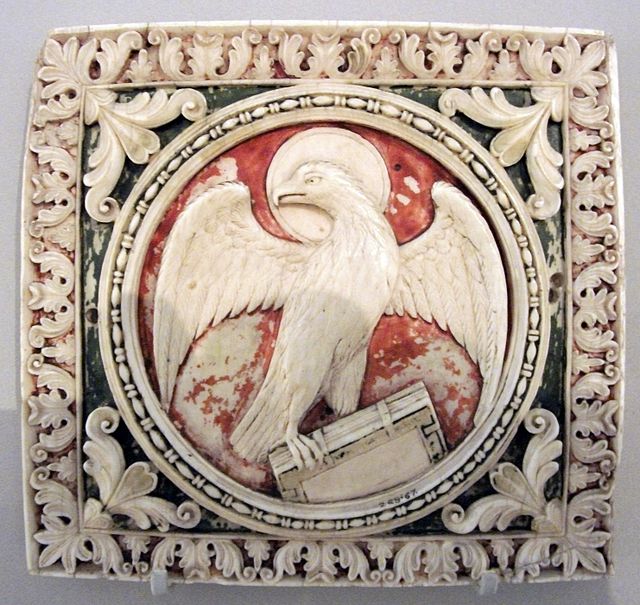The coat of arms of Germany displays a black eagle with a red beak, a red tongue and red feet on a golden field, which is blazoned: Or, an eagle displayed sable beaked langued and membered gules. This is the Bundesadler, formerly known as Reichsadler. It is one of the oldest coats of arms in the world, and today the oldest national symbol used in Europe.
Coat of arms of the Holy Roman Empire with two putti (1540s manuscript)
Imperial coat of arms (Römischer Kayserlicher und Königlicher Mayestät Wappen) from Siebmachers Wappenbuch (1605)
Germany's first national parliament meeting in Frankfurt. The double-headed eagle, now without the haloes of the Holy Roman Emperor's eagle, can be seen.
Title page of the Constitution of the Weimar Republic, with Schwab's design of the coat of arms
The eagle is used in heraldry as a charge, as a supporter, and as a crest. Heraldic eagles can be found throughout world history like in the Achaemenid Empire or in the present Republic of Indonesia. The European post-classical symbolism of the heraldic eagle is connected with the Roman Empire on one hand, and with Saint John the Evangelist on the other.
Examples of heraldic eagles of the 13th to 16th centuries, from Hugo Gerard Ströhl's Heraldischer Atlas
Carolingian ivory plaque with the Eagle of Saint John with halo, Victoria & Albert Museum.
An early heraldic eagle in the seal of Vienna (1239)
Or two eagles sable armed gules for Homberg (Zürich armorial, c. 1340). At this time, the black-on-gold eagle could still be used for a family of the lower nobility without association to the imperial eagle.








